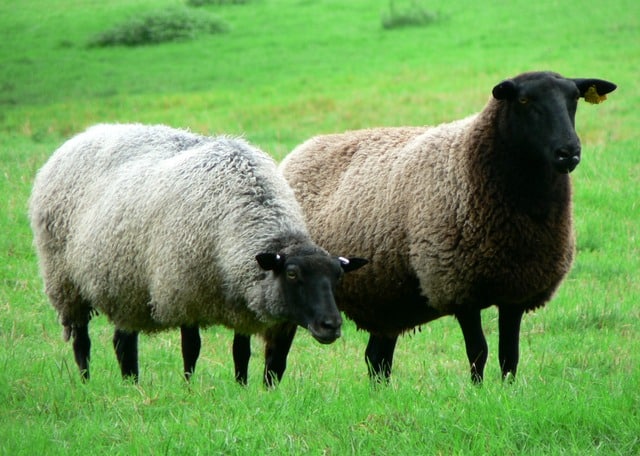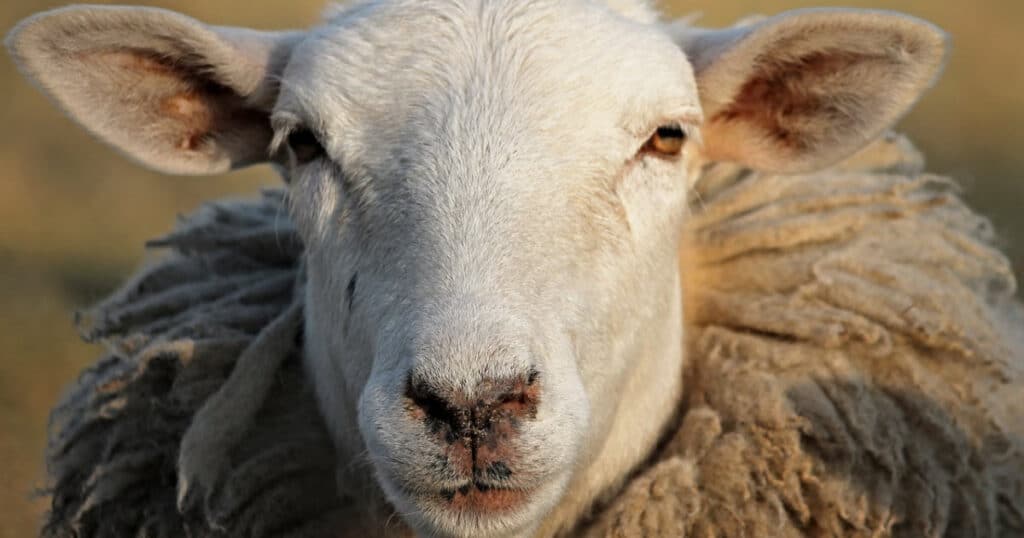For thousands of years shepherds have been raising sheep for wool in countries all over the world. Sheep wool is a preferred fiber because it is easy to work with (the crimp of each strand makes it easier to spin as the fibers “catch” one another more easily) and the fact that wool clothing provides warmth even when wet made it an ideal textile fabric throughout the ages – as useful in the middle ages when there was no electricity or baseboard heating as it is today.
If you’re thinking of raising sheep for wool on your farm there are several things you’ll need to consider – the first of which is why you plan to raise sheep, how you’ll use or market the wool, etc. These questions will help you develop a marketing plan for your wool and will also help you select the most suitable sheep breed.
Recommended: What is the Best Spinning Wheel for Beginners?
A Few Things to Consider Before You Begin Raising Sheep for Wool Production

- How much wool do you plan to produce? If you are only interested in raising enough wool for yourself – making sure you have a good supply for handspinning and knitting – then one or two productive long wool ewes like Romneys may be the ideal number. This will allow you to have sufficient wool without making you get in over your head right away with a flock that’s too big for you to manage. Many people sell ewe lambs in the spring and if you don’t get a ram you can save time and energy without having to worry about delivering lambs in the spring. With that said – you should remember that the time it takes to care for 2 sheep isn’t that different for the time required to care for 10 sheep. If you have friends, family or neighbors that may be interested in purchasing your wool it may make sense to have a slightly larger flock.
- How will you use the wool? This question will inform what type of sheep is best for you. fine wool breeds like a Merino or Rambouillet produce dense, heavy wool with a lot of lanolin (grease) and a very fine crimp which produces an extremely soft finished product (think of those fine Merino sweaters!), but a breed with longer wool might be better for beginners as there’s typically more wool produced each year and the coarser crimp makes it easier to work with. If you plan to sell wool or use it for blankets, talk to your local woolen mills or handspinning group before purchasing your animals to see what the local market is looking for and take that into account.
- Do you plan to make money? It’s challenging to make much money when raising sheep for wool unless you are able to find a niche as one of the best local producers in a community with avid handspinners, knitters or weavers who don’t have sheep of their own. Attending fiber events and festivals is a great introduction to this community and going to a few of these events before you get sheep is a great way to see if this is what you really want to do and (if it is) you can learn a lot and make great connections with knowledgeable folks who can offer guidance and tips.
Recommended: How to Use a Drum Carder to Turn Wool into Roving
Four Interesting Facts About Wool
- The crimp (waviness) of the wool is what makes it easy to work with, but it’s also what gives wool clothing its bulk. Wool from sheep with a fine crimp tends to produce less bulky clothing, but it is more challenging to spin. The bulkiness of wool clothing is one reason why it provides excellent insulation.
- Wool can absorb almost one-third of its own weight in water but it retains its insulating properties even when wet.
- It takes a much higher temperature to ignite wool than it does to ignite cotton or synthetic fabrics and when wool does catch fire the flame spreads very slowly. In fact wool doesn’t melt or drip in the presence of heat … it forms a “char” which will eventually distinguish itself. This is why many firefighters, soldiers and other men and women who are likely to encounter dangerous flames have traditionally worn wool clothing.
- Wool is hypoallergenic – if you’re sneezing you aren’t allergic to sheep!
The Rewards of Raising Wool Breeds of Sheep
Most shepherds who raise sheep for wool do so not for monetary gain, but that it’s a rewarding process. Humans have been raising sheep for wool since the dawn of time – wool is a renewable resource and the satisfaction of wearing a wool sweater or knitting a hat and mittens for your child which came from sheep that you raised yourself is something that you can’t get when you buy an article of clothing in a local department store. Take some time to learn about the different long wool and fine wool breeds in our directory to see which wool breed might be the right fit for your farm.

